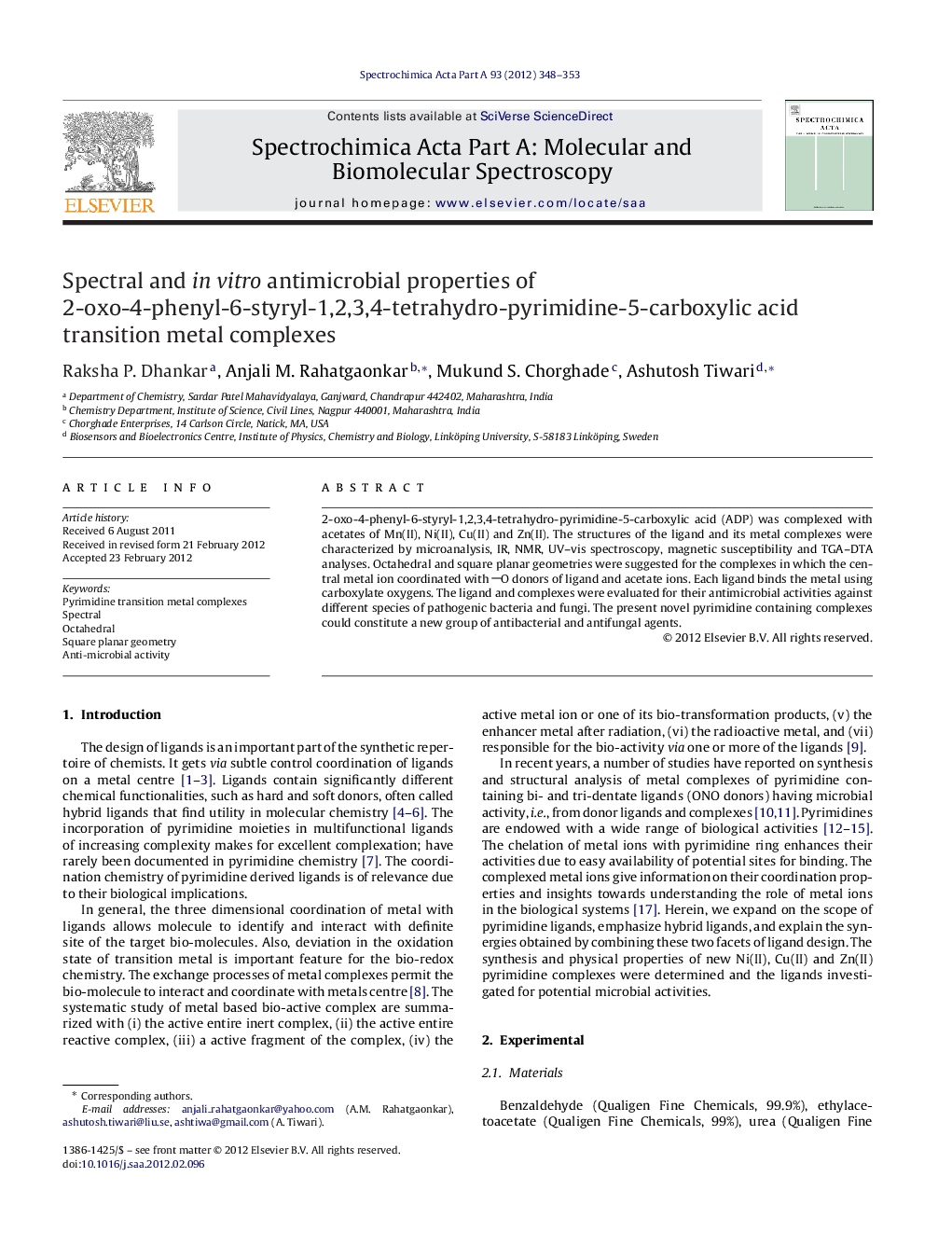| Article ID | Journal | Published Year | Pages | File Type |
|---|---|---|---|---|
| 1232800 | Spectrochimica Acta Part A: Molecular and Biomolecular Spectroscopy | 2012 | 6 Pages |
2-oxo-4-phenyl-6-styryl-1,2,3,4-tetrahydro-pyrimidine-5-carboxylic acid (ADP) was complexed with acetates of Mn(II), Ni(II), Cu(II) and Zn(II). The structures of the ligand and its metal complexes were characterized by microanalysis, IR, NMR, UV–vis spectroscopy, magnetic susceptibility and TGA–DTA analyses. Octahedral and square planar geometries were suggested for the complexes in which the central metal ion coordinated with O donors of ligand and acetate ions. Each ligand binds the metal using carboxylate oxygens. The ligand and complexes were evaluated for their antimicrobial activities against different species of pathogenic bacteria and fungi. The present novel pyrimidine containing complexes could constitute a new group of antibacterial and antifungal agents.
Graphical abstractOctahedral and square planar geometries suggested for the transition metal complexes which bind the metal using carboxylate oxygens, resulted effective and selective antibacterial activity against bacterial and fungal strains.Figure optionsDownload full-size imageDownload as PowerPoint slideHighlights► We evaluate pyrimidine carboxylic acid based Mn(II), Ni(II), Cu(II), Zn(II) complex formation. ► Mn(II), Ni(II), Cu(II), Zn(II) metal ions coordinate with –O donors of ligand and acetate ions. ► Octahedral, Square planar geometries were suggested for the complexes. ► We investigate in vitro antibacterial and antifungal activities of pyrimidine metal complexes.
